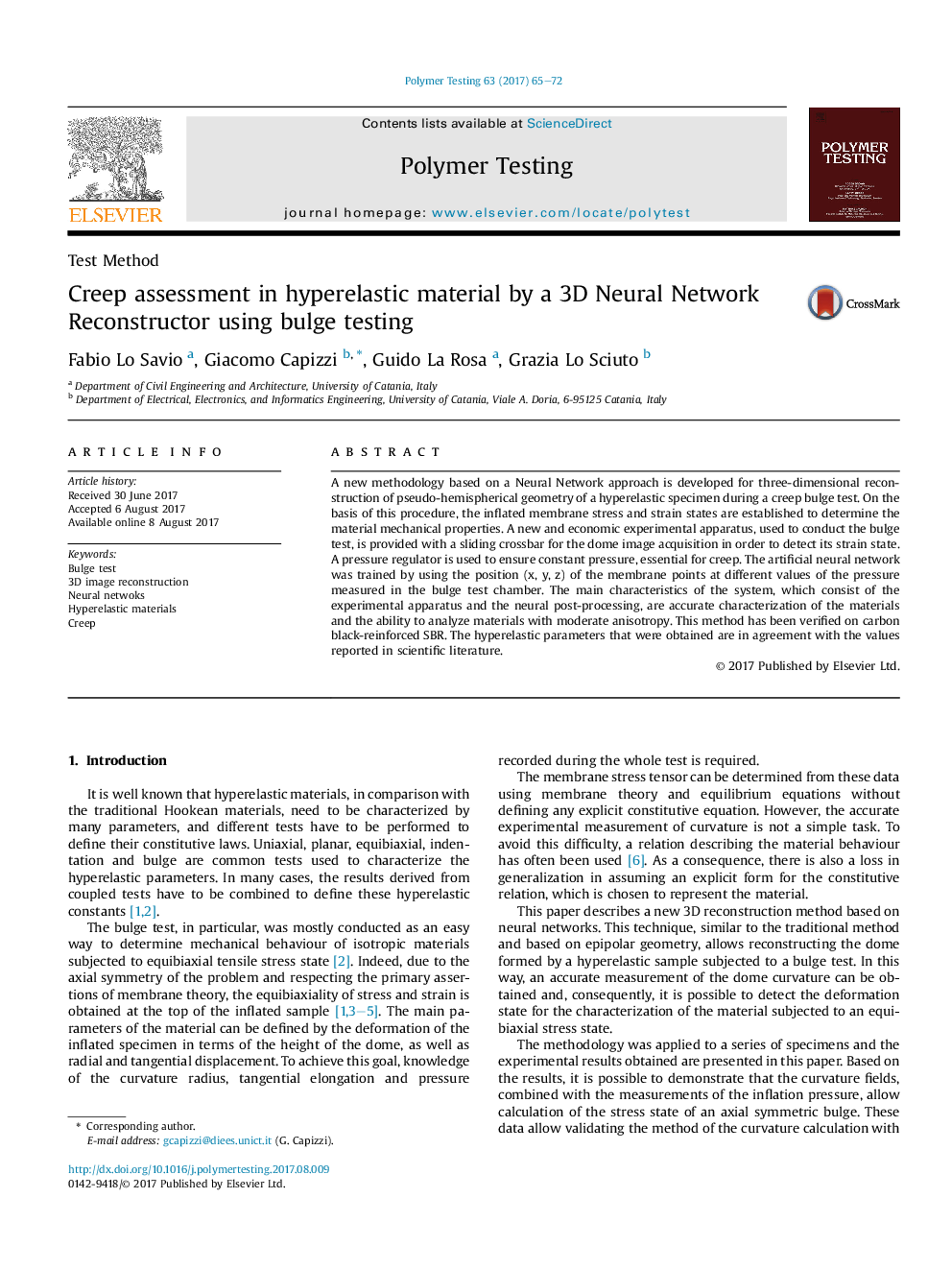| Article ID | Journal | Published Year | Pages | File Type |
|---|---|---|---|---|
| 5205235 | Polymer Testing | 2017 | 8 Pages |
Abstract
A new methodology based on a Neural Network approach is developed for three-dimensional reconstruction of pseudo-hemispherical geometry of a hyperelastic specimen during a creep bulge test. On the basis of this procedure, the inflated membrane stress and strain states are established to determine the material mechanical properties. A new and economic experimental apparatus, used to conduct the bulge test, is provided with a sliding crossbar for the dome image acquisition in order to detect its strain state. A pressure regulator is used to ensure constant pressure, essential for creep. The artificial neural network was trained by using the position (x, y, z) of the membrane points at different values of the pressure measured in the bulge test chamber. The main characteristics of the system, which consist of the experimental apparatus and the neural post-processing, are accurate characterization of the materials and the ability to analyze materials with moderate anisotropy. This method has been verified on carbon black-reinforced SBR. The hyperelastic parameters that were obtained are in agreement with the values reported in scientific literature.
Related Topics
Physical Sciences and Engineering
Chemistry
Organic Chemistry
Authors
Fabio Lo Savio, Giacomo Capizzi, Guido La Rosa, Grazia Lo Sciuto,
